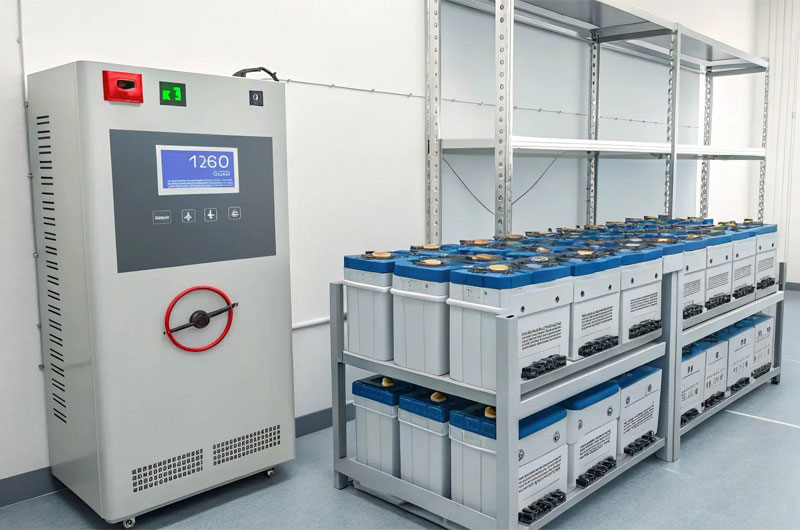Cold storage facilities ensure that perishable goods maintain their required low temperatures to avoid spoilage, contamination, or degradation. However, any disruption in temperature control, whether due to power outages, equipment failure, or natural disasters, can result in significant losses, regulatory non-compliance, and reputational damage.
That is why backup systems are not just optional additions, but vital safeguards that protect both the contents and the integrity of cold storage operations.
1. The Risks of System Failure
Cold storage facilities operate within narrow temperature bands, often between -18°C and -25°C for frozen goods, or between 0°C and 4°C for chilled items. A disruption of even a few hours can:
- Lead to product spoilage or waste.
- Violate food safety or pharmaceutical storage regulations.
- Damage sensitive medical or laboratory samples.
- Cause financial losses due to damaged inventory.
- Disrupt supply chains, especially in just-in-time operations.
Power outages, mechanical malfunctions, and network failures are all real and recurring threats. Without a robust backup system in place, even the best-maintained cold storage facility is vulnerable.
2. Types of Backup Systems
Several types of backup systems should be considered to ensure continuous operation and temperature stability. These include:
a. Backup Power Supply (Generators and UPS)
A reliable source of backup electricity is the cornerstone of any cold storage backup plan. Diesel or natural gas generators automatically start up during a power failure and can keep refrigeration systems, control panels, and lighting operational for extended periods.
- UPS (Uninterruptible Power Supply) units offer short-term power for critical systems (such as monitoring and alarm systems) until generators kick in.
- Regular maintenance and fuel availability checks are essential to ensure backup power systems are ready when needed.
b. Redundant Refrigeration Units
Installing more than one refrigeration unit per zone or chamber allows continued cooling in the event of a compressor or chiller failure.
- Redundant systems can either operate simultaneously (load sharing) or remain idle and only activate when a failure occurs.
- This redundancy is especially important in high-value or sensitive storage zones, such as pharmaceutical or biotech storage rooms.
c. Remote Monitoring and Alert Systems
Advanced monitoring systems can track temperature, humidity, door openings, and compressor status in real time.
- Alarms and alerts via SMS, email, or app notifications allow staff to take immediate action if something goes wrong.
- Integration with cloud platforms enables remote access to data and backup control systems.
d. Insulated Backup Containers and Thermal Mass
In the event of a long-term failure or natural disaster, insulated storage containers or backup rooms can temporarily house goods.
- High thermal mass materials like ice packs, dry ice, or phase change materials can delay temperature rises.
- Some facilities also design cold rooms with increased insulation to prolong temperature retention during blackouts.
3. Benefits of Backup Systems
a. Product Protection and Loss Prevention
The primary benefit of backup systems is the prevention of product spoilage. In industries like food, pharmaceuticals, and life sciences, the value of inventory stored in a single cold room can run into millions of dollars. A well-designed backup system ensures product integrity and prevents costly waste.
b. Regulatory Compliance
Food and drug storage facilities must comply with strict regulatory standards such as:
- HACCP (Hazard Analysis Critical Control Points)
- FDA (Food and Drug Administration) rules
- GMP (Good Manufacturing Practices)
- WHO guidelines for vaccine storage
Failure to maintain specified conditions—even briefly—can lead to compliance violations, penalties, and product recalls. Backup systems provide a critical layer of protection that ensures adherence to legal and industry standards.
c. Business Continuity
Downtime in cold storage operations can paralyze supply chains. Backup systems allow businesses to continue operating smoothly during unexpected events, protecting not just goods but customer relationships and brand reputation.
- Backup generators ensure loading bays, lighting, and data systems keep running.
- Redundant refrigeration ensures that shipments can be received and dispatched without delays.
d. Data Integrity and Audit Trails
Digital monitoring systems backed by UPS and cloud storage ensure uninterrupted data logging during power outages. This data is crucial for:
- Quality audits
- Insurance claims
- Regulatory inspections
- Trend analysis and preventive maintenance
4. Designing Effective Backup Systems
To be truly effective, backup systems must be:
- Properly sized: Backup generators and refrigeration units must be capable of handling the facility’s full load, or at least the most critical zones.
- Routinely tested: Weekly or monthly drills and simulations ensure readiness.
- Integrated with monitoring systems: Seamless automation between detection, alert, and response functions minimizes human error.
- Documented: Clear emergency protocols and training should be provided to all staff.
It’s also critical to involve qualified engineers and facility designers in the planning and installation stages to ensure compatibility and redundancy.
5. Cost vs. Risk: Justifying the Investment
Some facility managers may hesitate to invest in comprehensive backup systems due to perceived cost. However, the cost of a single incident—such as a power outage causing inventory loss—can far exceed the expense of installing a backup system.
For example:
- A pharmaceutical cold room storing vaccines worth $2 million loses temperature control for 4 hours.
- Without backup, all vaccines are compromised and must be discarded.
- In contrast, a generator costing $100,000 would have prevented the loss.
Viewed this way, backup systems are not operational costs—they are strategic investments in risk mitigation.
6. Real-World Examples of Backup Systems in Action
- Food Distribution Centers: Grocery chains often operate centralized cold storage facilities. A power outage in one such center could impact hundreds of stores. These centers typically use layered backups—generators, redundant compressors, and remote alarm systems.
- Biotech Laboratories: Research labs storing biological samples and reagents use -80°C freezers with dual compressors and emergency dry ice storage, ensuring no data or samples are lost.
- Vaccine Storage Warehouses: In 2020, COVID-19 vaccines had to be stored at ultra-low temperatures. Facilities handling them were equipped with backup power, duplicate freezer units, and 24/7 real-time monitoring.

